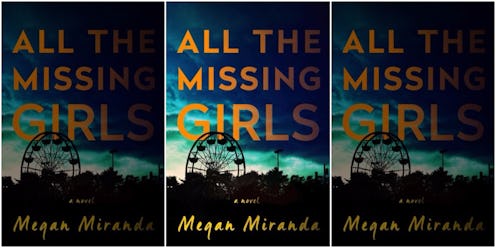Books
5 Books With A Unique Chronology

Time. We’re either chasing it or fighting against it, peering back into it, or watching as it slowly slips through our fingers. At least, in the linear story.
But in writing my new novel, All The Missing Girls, out today from Simon & Schuster, I became interested in books that instead use time in more unusual ways—reordering, rewinding, or reimagining linear life into a unique reading experience. I had set out to tell All the Missing Girls in reverse, from Day 15 to Day one, and I was fascinated by how other authors chose to play with chronology in their own books, providing us with a different insight into the connections between characters, stories, and the human experience.
My novel centers on Nicolette Farrell, a woman who left her rural hometown after her best friend disappeared. Ten years later, Nic returns to care for her ailing father, and she is plunged into the decade-old investigation. Within days of her return, a young neighbor, Annaleise Carter, also goes missing. The novel begins at the end — the disappearance of Annaleise — and work backwards to the beginning.
Like my novel, these books eschewed a linear format in favor of something unique. Here are five novels that reimagined and rearranged linear life:
1. The Time Traveler’s Wife by Audrey Niffenegger
Henry moves through time; his wife, Clare, does not. As a result, the start of each section is labeled with not only a date in time, but also the age of each character, all of which shift, forward and back, as the story progresses. When Clare first meets Henry, she’s still a child, visited by an older Henry who is already married to the Clare in the future. But when Henry first meets Clare in his linear time, she has already known him for most of her life. This leads to a circular thought process, a chicken or the egg question: Do they get together because Clare tells Henry they eventually end up married? Which Clare only knows because the future Henry tells her the same thing? The reading experience becomes more than just the story, but a question of cause and effect, and a feeling that, even here, we cannot change our pasts, and that life is still finite.
2. Life After Life by Kate Atkinson
Unlike in The Time Traveler’s Wife, in this story, the past can and does change. Ursula dies many times: at birth, from illness, from a fall, just to name a few. But each time she dies, the story begins again, now with a slight alteration that shifts Ursula’s path until her death is avoided, and she continues on. Eventually, even Ursula is haunted by an uncanny sense of déjà vu. The changes can be slight: a doctor arrives in time; a painter looks out the window; her sister calls for her. But the shifts in Ursula’s life also radiate outward, affecting the lives (or deaths) of those around her. There’s a sense, when reading this book, that all lives can be changed by a moment. And as we follow Ursula through each version of her life, we learn a little more, see a little deeper, hold on a little tighter, realizing how fragile everything truly is.
3. All the Birds, Singing by Evie Wyld
In the present, Jake is haunted by something killing her sheep on the isolated farm where she’s living, surrounded be people she’s not sure whether she can trust. But interspersed, every other chapter, the story takes a leap backward into her past, slowly revealing all the events, choices, and consequences that have brought her to this present. The paths continue to diverge—one timeline moving forward, the other jumping further back with each section—until you end with the same character in two different places, all the secrets of the past now exposed, and a deeper understanding of the woman in the present.
4. Cloud Atlas by David Mitchell
Six short stories cut in half and nested together, each different in tone and in time. The narratives seem to be unrelated, but eventually, each previous story becomes a part of the next. The first story is told through a journal, which is then discovered in the next story, narrated through letters, which are then discovered in the following section, which in turn becomes a book, read by a publisher whose story becomes a movie watched in the next… So that as you read, each narrative builds, taking the earlier story along as a tangible thing that lives on in the next section, and a future generation.
5. C atch-22 by Joseph Heller
Yossarian wants to live forever (or die in the attempt), instead of fighting in the war any longer. Told largely out of order, and with scenes from the past and present and digressions to the narrative all woven together, the story focuses largely on the absurdity of the situations. But like the circular reasoning of a Catch-22 itself, the timeline here occasionally circles back around—each time adding in another layer, so that things mentioned earlier suddenly become clearer. As the past and the present are more fully revealed, the lack of chronology seems more purposeful, allowing the characters to circumvent the horrors that await them, and those they have already seen.